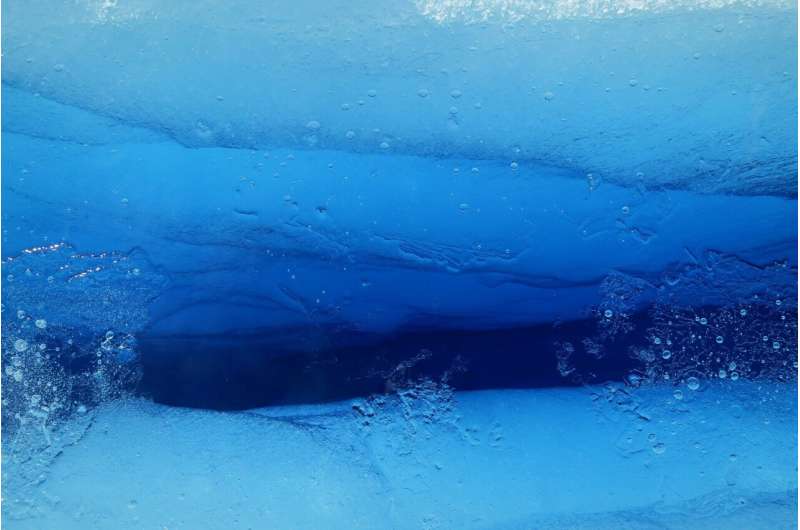Robot provides never before seen views below Antarctic ice shelf.
- March 21, 2023
- Posted by: Sinead Sprigg
- Category: Environmental, Global, Arctic & Antarctica

Near where the surface of the Ross Ice Shelf meets Kamb Ice Stream, a U.S.-New Zealand research team’s remotely operated vehicle – Icefin – has captured images of sudden changes in scenery inside a crevasse at the base of Antarctica’s largest ice shelf. The images showed ice that had just melted less than 100 feet below, flowed up into the crevasse and then refroze – a process known as “ice pumping”, a process never before directly observed in an ice shelf crevasse.
The images showed walls of smooth, cloudy meteoric ice which suddenly turned green and rougher in texture, transitioning to salty marine ice.
“It’s a way these big ice shelves can protect and heal themselves,” says Peter Washam, a polar oceanographer on the Icefin science team. Ice pumping likely contributes to the relative stability of the Ross ice shelf, researchers say.
The Icefin’s observations reveal more than a century of geological processes, and are detailed in are detailed in “Crevasse Refreezing and Signatures of Retreat Observed at Kamb Ice Stream Grounding Zone,” published March 2 in Nature Geoscience.
The research is expected to improve models of sea-level rise by providing the first high-resolution views of ice, ocean and sea floor interactions at contrasting glacier systems on the West Antarctic Ice Sheet.
NASA funded Icefin’s development and the Kamb exploration to extend ocean exploration beyond Earth. Kamb currently offsets some of the ice loss from western Antarctica, but if it reactivates could increase the region’s contribution to sea-level rise by 12%. Marine ice like that found in the crevasse may be an analog for conditions on Jupiter’s icy moon Europa.
The Ross Ice Shelf is the world’s largest by area, the size of France compared to Thwaites Glacier. Ice pumping observed in the crevasse likely contributes to the relative stability of the ice shelf.
